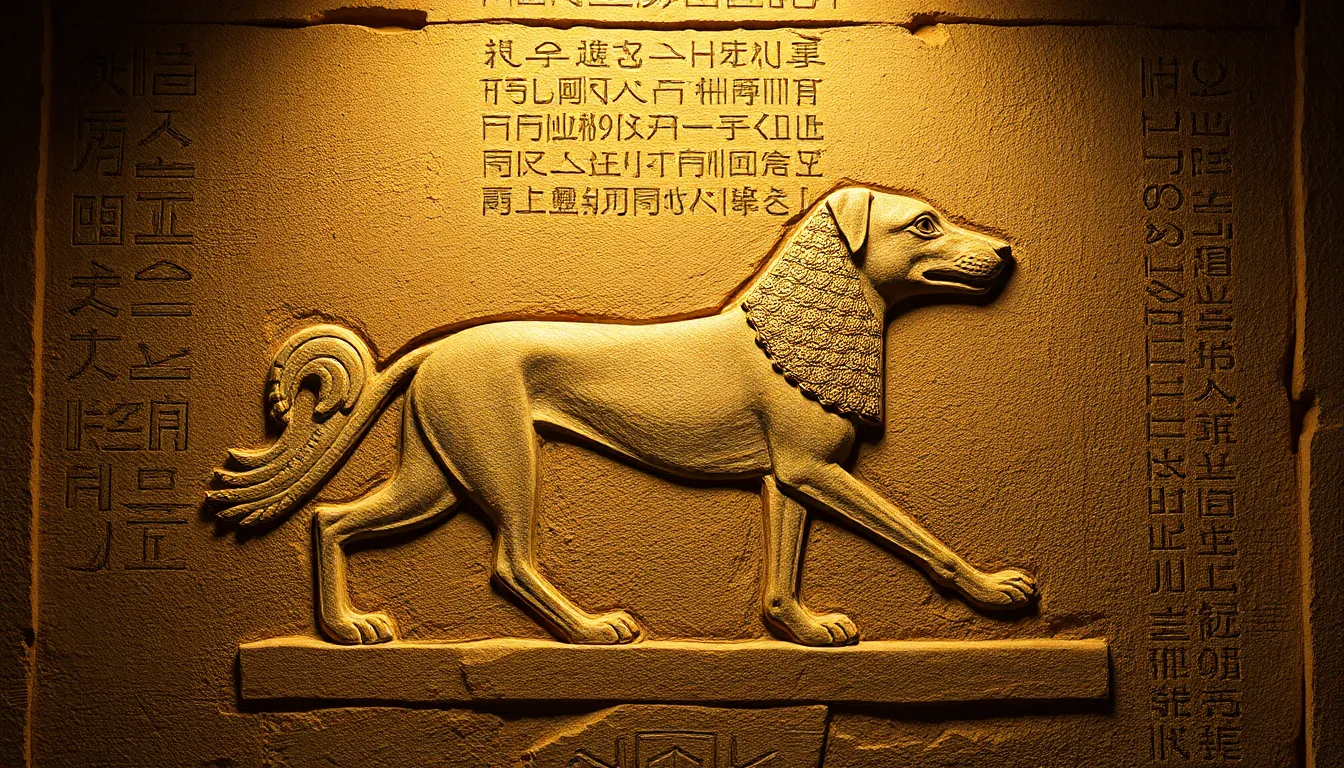The Symbolism of the Dog in Tomb Texts
I. Introduction
Tomb texts, a key aspect of ancient burial practices, are inscriptions found in or on tombs that provide insights into the beliefs and rituals of ancient cultures. These texts often served to guide and protect the deceased in the afterlife, reflecting the values and customs of their time.
Animals have long held significant roles in ancient symbolism, representing various attributes and qualities that were important to human life. Among these, the dog stands out as a recurring symbol in tomb texts, embodying complex ideas related to loyalty, companionship, and protection.
II. Historical Context of Dogs in Ancient Civilizations
The domestication of dogs dates back thousands of years, with evidence suggesting that they were among the first animals to be tamed by humans. In ancient societies, dogs were valued not only for their companionship but also for their roles in hunting and protection.
- Egypt: Dogs were cherished in ancient Egypt, often associated with the goddess Anubis, who was depicted with a canine head. They were seen as protectors of the dead and guides in the afterlife.
- Mesopotamia: In Mesopotamian cultures, dogs were also held in high regard, often associated with deities and believed to possess protective qualities.
- Other Regions: Across various ancient civilizations, dogs symbolized fidelity and were often included in burial practices to accompany the deceased.
The presence of dogs in mythology and religion further underscores their significance, as they were often depicted in stories that emphasized their protective and guiding roles.
III. The Dog as a Guide in the Afterlife
In many ancient cultures, dogs were believed to serve as guides for the deceased, assisting them in navigating the afterlife. This belief is particularly prominent in Egyptian tomb texts, where references to dogs often highlight their role as protectors and companions on the journey to the underworld.
Specific references in ancient Egyptian tomb texts depict dogs accompanying the deceased, ensuring safe passage and protection against malevolent forces. For example, the dog is frequently seen in tomb art alongside the deceased, symbolizing loyalty and guidance.
Comparative analysis with other cultures reveals similar beliefs regarding dogs and the afterlife. In Greek mythology, for instance, the three-headed dog Cerberus is tasked with guarding the gates of the underworld, serving as a guide for souls entering the realm of the dead.
IV. Symbolism of Loyalty and Companionship
The dog is universally recognized as a symbol of loyalty, a quality that resonates deeply in human relationships. In tomb imagery and inscriptions, the representation of dogs often emphasizes their role as faithful companions to the deceased.
- Loyalty: Dogs are depicted as steadfast companions, symbolizing the bond between the living and the deceased.
- Companionship: The emotional significance of dogs in the lives of their owners is reflected in tomb texts, where they are often included in scenes of daily life, illustrating the deep connection shared.
This portrayal highlights not only the value of loyalty in human relationships but also the desire for companionship that extends beyond death, offering comfort to the bereaved.
V. Dogs as Protectors Against Evil
In examining tomb texts, one can find numerous references to dogs serving as guardians against evil and malevolent forces. This protective symbolism is paramount in the context of funerary practices, where the presence of a dog signifies a safeguard for the deceased.
- Guardianship: Dogs are often represented in tomb art as vigilant protectors, standing watch over the deceased.
- Symbolic Associations: Their association with protection extends to the belief that dogs could ward off evil spirits, offering a sense of security to the departed.
Case studies of specific tomb texts reveal instances where dogs are explicitly mentioned in protective roles, further solidifying their importance in ancient burial practices.
VI. The Dual Nature of Dogs: Life and Death
The duality of dogs in ancient texts reflects their contrasting roles in life and death. While they are symbols of loyalty and companionship, they also represent the inevitability of mortality.
- Mortality: Dogs are often seen as reminders of the transient nature of life, accompanying their owners in both life and death.
- Immortality: In the context of the afterlife, dogs symbolize the continuation of companionship beyond death, emphasizing the belief in an eternal bond.
This duality profoundly impacts funerary practices, as the presence of dogs in tombs signifies both an acknowledgment of mortality and a celebration of the enduring nature of love and companionship.
VII. Artistic Representations of Dogs in Tomb Art
The artistic depictions of dogs in tombs offer rich insights into their symbolic meanings. These representations are not merely decorative; they convey deep cultural beliefs and values associated with the canine form.
- Artistic Depictions: Dogs are often portrayed in various poses, from sitting loyally beside the deceased to standing guard, emphasizing their protective nature.
- Symbolic Meanings: The imagery used in tomb art often reflects broader themes of loyalty, guidance, and protection, reinforcing the dog’s multifaceted role.
Moreover, the influence of dog symbolism extends to tomb architecture and design, where spaces are often created to honor the bond between humans and their canine companions.
VIII. Conclusion
The multifaceted symbolism of dogs in tomb texts illustrates their profound significance in ancient beliefs. From their roles as loyal companions and guides to their protective nature against evil, dogs embody complex ideas that resonate across cultures and time periods.
Understanding these symbols in the context of ancient beliefs provides valuable insights into the human experience, revealing the enduring legacy of dogs in human culture and symbolism. As we reflect on the past, we recognize that the bond between humans and dogs transcends time, continuing to shape our lives and beliefs today.




